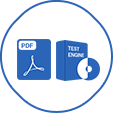When major change is introduced, employees often experience strong emotions. TheChange Curve, based on Elisabeth Kübler-Ross’s grief model, describes the stages staff may go through when faced with organisational change.
The first stage isShock/Denial. The procurement assistants may initially resist the idea of e-procurement, insisting that the paper-based system “has always worked.” Sayed should communicate openly about why the change is needed and provide clear facts about its benefits.
The second stage isAnger/Resistance. Staff may feel threatened, fearing loss of control or concern that they will not have the skills to manage digital systems. They may complain or openly resist. At this point, Sayed should listen empathetically, address concerns, and provide reassurance that training and support will be available.
The third stage isExploration/Acceptance. Gradually, staff begin to see potential benefits, such as less paperwork and faster processes. Curiosity grows, and employees start experimenting with the new system. Here, Sayed should encourage participation, offer pilot training, and allow staff to test the system in a safe environment.
The fourth stage isCommitment/Integration. Once staff feel competent and confident, they fully adopt the change. At this stage, Sayed should reinforce the success, recognise achievements, and celebrate improvements, such as reduced errors or faster ordering.
How Sayed Should Act:
Communicate clearly– explain why digitalisation is important (efficiency, accuracy, competitiveness).
Provide training and support– ensure assistants feel capable of using the new e-procurement tools.
Involve the team– allow staff to give feedback on system design or pilot trials to increase buy-in.
Be empathetic and patient– acknowledge fears and provide reassurance during resistance.
Reinforce success– highlight early wins and show how the change benefits both the team and the organisation.
Conclusion:
The team is likely to experience stages of shock, anger, exploration, and eventual commitment as they move through the change curve. Sayed must act as a supportive leader by communicating openly, offering training, involving staff, and recognising progress. This approach will help the team transition smoothly to e-procurement and ensure the change is successful.








